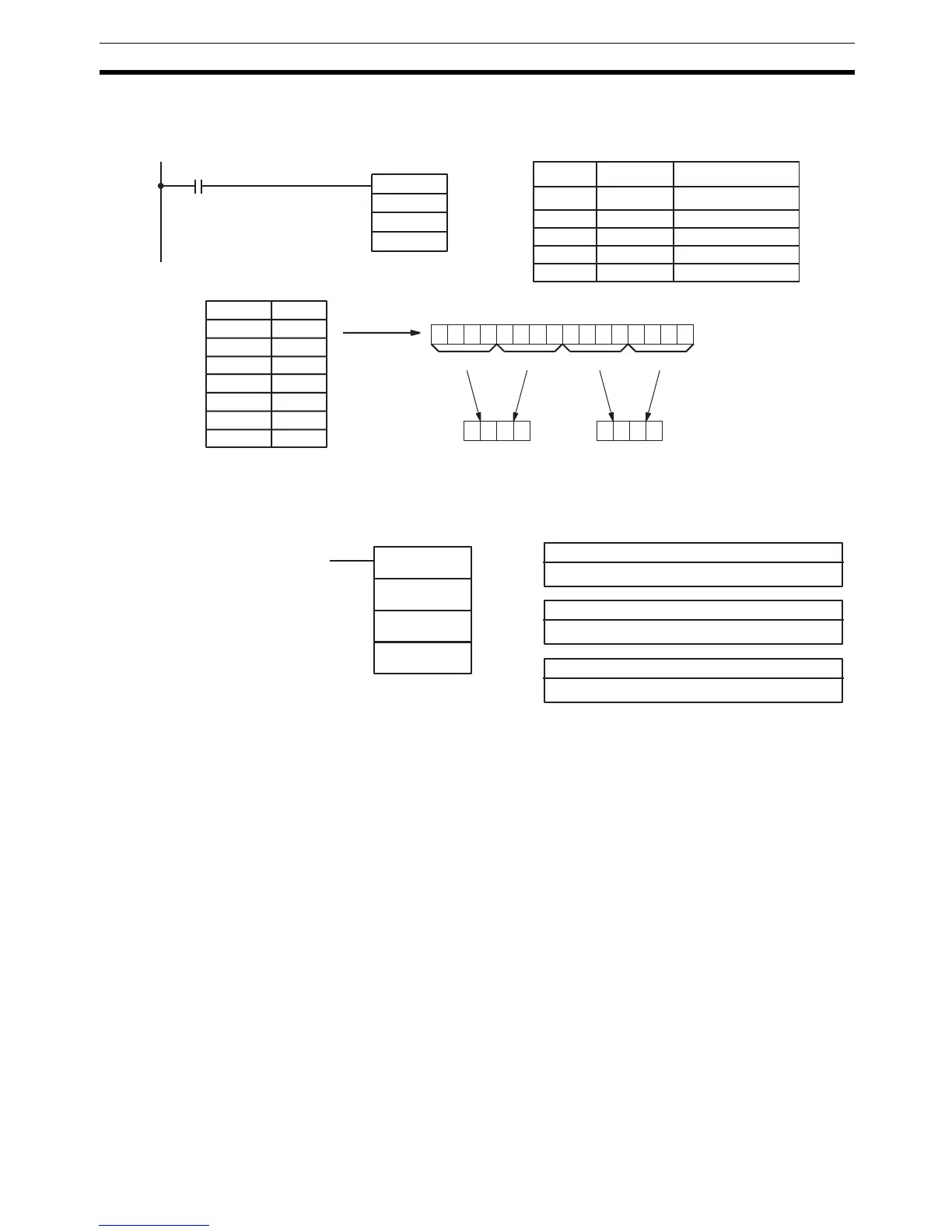387
Special Instructions Section 5-28
Example When IR 00000 is ON in the following example, the frame checksum (0008) is
calculated for the 8 words from DM 0000 to DM 0007 and the ASCII equiva-
lent (30 30 30 38) is written to DM 0010 and DM 0011.
5-28-7 FAILURE POINT DETECTION – FPD(––)
Limitations D and D+8 must be in the same data area when bit 15 of C is ON.
DM 6144 to DM 6655 cannot be used for T or D.
C must be input as a constant.
Description FPD(––) can be used in the program as many times as desired, but each
must use a different D. It is used to monitor the time between the execution of
FPD(––) and the execution of a diagnostic output. If the time exceeds T, an
FAL(06) non-fatal error will be generated with the FAL number specified in C.
@FCS(−−)
DM 0000
#0008
00000
DM 0010
Address Instruction Operands
00000 LD 00000
00001 @FCS(−−)
# 0008
DM 0000
DM 0010
DM 0000 0001
DM 0001 0002
DM 0002 0003
DM 0003 0004
DM 0004 0005
DM 0005 0006
DM 0006 0007
DM 0007 0008
0 0 0 0 0 0 0 0 0 0 0 0 1 0 0 0
0 800
FCS
calculation
3 0 3 8DM 00113 0 3 0DM 0010
ASCII code
conversion
T: Monitoring time (BCD)
IR, SR, AR, DM, EM, HR, TIM/CNT. LR, #
C: Control data
#
Ladder Symbols Operand Data Areas
FPD(−− )
C
T
D
D: First register word
IR, SR, AR, DM, EM, HR, LR
